New Grids on the Block
Gregor Henze is a professor of architectural engineering at the University of Colorado at Boulder in the United States, spending his sabbatical at Eurac Research where he is researching grid-interactive efficient buildings and promoting the penetration of renewables.
What are grid-interactive efficient buildings and why do we need them?
Gregor Henze: What we’re after is flexibility. Currently buildings are inflexible, in terms of how they behave with respect to energy systems. When we turn on a light switch, we expect energy to flow to that light. In the past at least, we expected buildings’ energy needs to be met immediately. And we recognize that was okay for then – for energy to be produced to meet load. We call this a load following energy system. The light is being turned on, so I better put in more coal into the coal-fired power plant. That worked well for a long time but as we’re transitioning to a lower carbon energy system, we cannot just add a piece of coal and make that extra bit of energy. There might be a point in time when we don’t have that because the wind isn’t blowing, or the sun isn’t shining. So rather than always listening to the needs of a building and following its demands, we want to turn the equation around and say, okay, rather than following a load, let’s follow the source.
What’s the status quo with these kind of buildings at the moment, and what’s the future?
Henze: We have ways to respond to occupancy. We can say, well, if no one’s there, then we turn things off. We could also work with expected occupancy, based on knowledge of when people tend to come home or tend to come to work, - something which currently is not being done. Figuratively speaking, today most buildings are running like a V8 engine at a stoplight and they’re idling. I would say we need to make sure that we operate buildings in a way that responds to the actual occupancy and needs of occupants. It’s an opportunity for buildings to behave better, to become better citizens of the electric grid system, while at the same time focusing on what they are designed to do, which is to serve the occupants with their individual needs, expectations, and activities.
Basically today most buildings are running like a V8 engine at a stoplight and they‘re idling.
Buildings as citizens. Cool!
Henze: This notion of better citizens of the grid is one that I would like to use because buildings matter. Buildings matter in that they, both in the United States and Europe, take up about a 40% share of the total energy consumption. So, we’re talking about the single largest sector of energy use. How can we make a building smarter, more responsive to recognize when people are home, when people are at work? How do we make buildings listen to what the grid needs? There’s clearly a large role for energy storage. Energy storage might eliminate the need for flexibility in the built environment at some point in the future. If we have enough storage in the electric grid system, electric storage or other forms, then we might not need any change in the design and operation of buildings. But I’m basically driven by the belief that that is not going to happen anytime soon. So rather than waiting for large scale electric battery or electric storage to come down in price, why not use what is available? The notion here is buildings have some innate flexibility that has been left untapped so far.
So, how do you encourage uptake and the change of habits?
Henze: It’s understood that the easiest way to entice building owners of commercial buildings or building owners of residential buildings to participate in this opportunity, is if there is an economic incentive. One of the shortcomings there is, we are often not able to introduce the dynamic electric rates to customers the way we would like to because public utility commissions don’t allow that to happen. And they don’t allow it to happen because there’s a concern for some population groups that they don’t know what to do with this kind of complexity. The common example is your grandmother. How would she respond to real-time pricing or dynamic price scenarios? Or in the absence of her knowing how to deal with that, would she be left with higher expenses that she incurs because she didn’t know, oh, I wasn’t supposed to bake cookies at 3:00 PM. That makes public utility commissions historically conservative in their willingness to experiment with residential customers. Because you don’t want to have anyone unsuspecting and vulnerable be left with a large bill to foot.
What really causes the shift? Economics or saving the planet?
Henze: Good question, will the financial benefit incentivize them to do the right thing in terms of allowing buildings to be flexible, so it matters when we need it? That leads to a second question. When do we need that flexibility? It’s clear that the dire predictions of the grid becoming unstable and failing because we have too much wind and solar and too many brownouts and blackouts, will be corroborated – in fact, it’s happening already. We are ramping up the amount of renewables, the renewables penetration, so we’ll be ready when we get to the point where that flexibility is required. At the moment, the renewables penetration in the United States is still low, we’re still mostly burning coal and natural gas. And as you know, because of our hydraulic fracturing, we have a lot of natural gas and in fact, we are turning off a lot of coal fired power plants because we have so much natural gas. And that is a good thing because natural gas has about half the carbon content of coal. Unfortunately, now we’re shipping coal to other countries where it’s burned because they need it and we do not. So that, of course, gets back to the fact that we are one big planet and if we don’t emit in the United States, it might be emitted elsewhere. We have to think in terms of global interconnected systems.
How urgent is this?
Henze: From a US perspective, we have what is very expensive in Europe – natural gas in abundance, which allows us to operate power plants that are very flexible in their behavior. So, do we need grid-interactive efficient buildings today in 2021, else we die? No. Yet, I argue that as we are ramping up, as we’re retiring more and more fossil energy power plants, we are increasing the need for the demand side to be more flexible. Another reason we are making a conscious switch from high carbon content fuels to low ones is the fact that we experience widespread droughts and water shortage, especially in the West of the United States including my state of Colorado, which affect our energy system. Energy and water do go hand in hand: If we have conventional fossil fuel, to reject heat we need water. If we don’t have water, we have fires that bring down our electric distribution systems. Hence, as you can see, energy flexibility is also building block of increasing the resilience of our energy system infrastructure in the face of climate change. Consequently, it’s something that deserves research and planning, so that we’re ready when we need it.
What can we do today?
Henze: The answer for today is to develop and deploy automated systems in the loop, like control systems that receive a demand response signal, and they would say, okay, electricity is expensive now, or we’re falling into a so-called demand response window. And then you would maybe have reduced cooling or heating for a certain set of hours. There would be the risk of discomfort, for the occupants. But that’s what we can do today. In the future, I want buildings to be occupant-aware and occupant-centric and be there for people and not just trade energy against comfort. We need to better understand the indoor environment and our wellbeing and productivity as humans. Under what conditions are researchers here at Eurac Research more productive? I might actually forego opportunities for saving energy and saving cost by steering our building operation towards maximum productivity of the occupant, but without the idling when the building is not or only partially occupied.
So, would you plant a tree or would you buy a Tesla?
Henze: I would plant a tree. Definitely. The forest is my sanctuary. I love everything about trees during all seasons, but I also think that we have some way to go with electric vehicle battery circularity. Here’s an interesting question: If I don’t buy the EV today, will the battery technology ever get as advanced as it needs to be? The only way we get to the better technologies is by having people now buy and consume inferior technology because the better technology doesn’t just appear. So, in a way I really should be buying that Tesla. Then again, I love Italy and I love riding my Vespa. So, between a tree and a Tesla, I would choose riding my Vespa, maybe even through a forest.
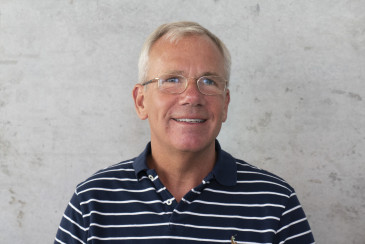
Gregor Henze
Professor Gregor P. Henze, Ph.D., researches energy system integration and architectural engineering. He’s the primary author of more than 150 research articles, four of which have received best paper awards, and received three patents, he’s also a professional mechanical engineer, certified high-performance building design professional, Fellow of the Renewable and Sustainable Energy, joint professor at the National Renewable Energy Laboratory in Golden, Colorado as well as co-founder and chief scientist of QCoefficient, Inc. As part of his sabbatical from the University of Colorado his research has brought him to the Eurac Research Institute of Renewable Energy, where he is freely admitting to having a great experience.
Related Articles
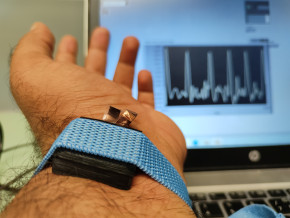
Tecno-prodotti. Creati nuovi sensori triboelettrici nel laboratorio di sensoristica al NOI Techpark
I wearable sono dispositivi ormai imprescindibili nel settore sanitario e sportivo: un mercato in crescita a livello globale che ha bisogno di fonti di energia alternative e sensori affidabili, economici e sostenibili. Il laboratorio Sensing Technologies Lab della Libera Università di Bolzano (unibz) al Parco Tecnologico NOI Techpark ha realizzato un prototipo di dispositivo indossabile autoalimentato che soddisfa tutti questi requisiti. Un progetto nato grazie alla collaborazione con il Center for Sensing Solutions di Eurac Research e l’Advanced Technology Institute dell’Università del Surrey.
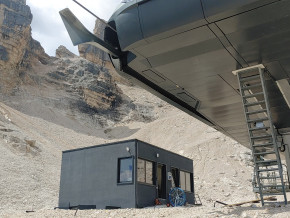
unibz forscht an technologischen Lösungen zur Erhaltung des Permafrostes in den Dolomiten
Wie kann brüchig gewordener Boden in den Dolomiten gekühlt und damit gesichert werden? Am Samstag, den 9. September fand in Cortina d'Ampezzo an der Bergstation der Sesselbahn Pian Ra Valles Bus Tofana die Präsentation des Projekts „Rescue Permafrost " statt. Ein Projekt, das in Zusammenarbeit mit Fachleuten für nachhaltiges Design, darunter einem Forschungsteam für Umweltphysik der unibz, entwickelt wurde. Das gemeinsame Ziel: das gefährliche Auftauen des Permafrosts zu verhindern, ein Phänomen, das aufgrund des globalen Klimawandels immer öfter auftritt. Die Freie Universität Bozen hat nun im Rahmen des Forschungsprojekts eine erste dynamische Analyse der Auswirkungen einer technologischen Lösung zur Kühlung der Bodentemperatur durchgeführt.
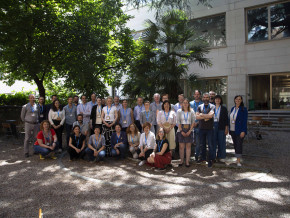
Gesunde Böden dank Partizipation der Bevölkerung: unibz koordiniert Citizen-Science-Projekt ECHO
Die Citizen-Science-Initiative „ECHO - Engaging Citizens in soil science: the road to Healthier Soils" zielt darauf ab, das Wissen und das Bewusstsein der EU-Bürger:innen für die Bodengesundheit über deren aktive Einbeziehung in das Projekt zu verbessern. Mit 16 Teilnehmern aus ganz Europa - 10 führenden Universitäten und Forschungszentren, 4 KMU und 2 Stiftungen - wird ECHO 16.500 Standorte in verschiedenen klimatischen und biogeografischen Regionen bewerten, um seine ehrgeizigen Ziele zu erreichen.
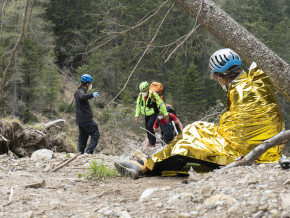
Erstversorgung: Drohnen machen den Unterschied
Die Ergebnisse einer Studie von Eurac Research und der Bergrettung Südtirol liegen vor.
